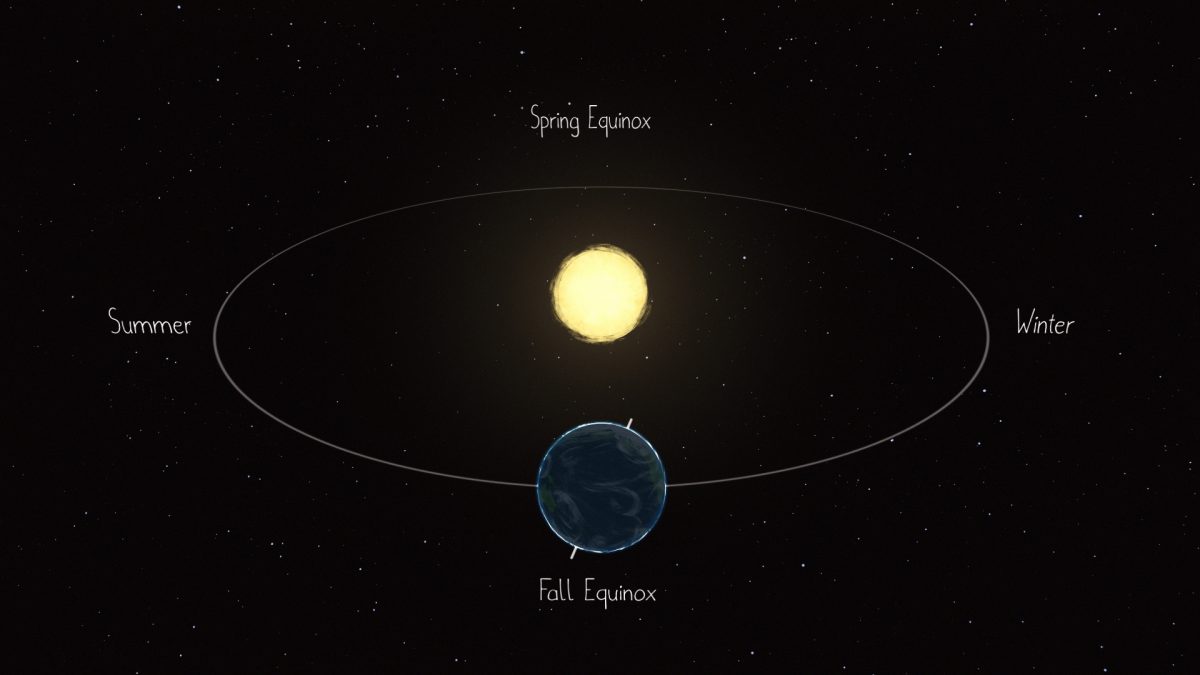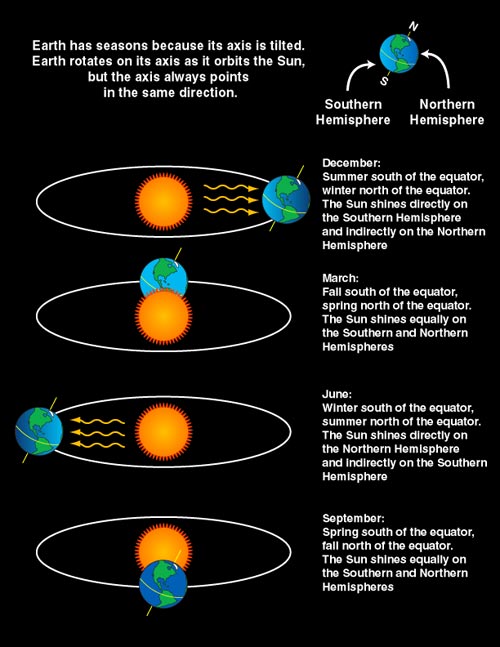In meteorology, the fall season begins on Sept. 1, however, the September (or fall) equinox gives us the green light to welcome the astronomical fall season in the Northern Hemisphere (and astronomical spring season in the Southern Hemisphere). This happens Sept. 22, 2021, at 19:21 UTC, which is 2:21 p.m. CDT for us in North America.

Along with marking the beginning of astronomical fall, the Sun will be exactly above Earth’s equator, moving from north to south, making day and night nearly equal in length – about 12 hours – throughout the world.
At the North Pole, over the upcoming days, the Sun will sink below the horizon for a kind of twilight from now until sometime in October when it will be completely dark, according to NASA solar scientist Mitzi Adams. Spring twilight at the North Pole begins a few weeks before the vernal, or spring, equinox in March, when the Sun rises above the horizon again.
This only happens twice in Earth’s year-long trip around the Sun. The rest of the year, the Sun shines unevenly over the Northern and Southern Hemispheres. That’s because Earth’s axis is tilted with respect to the Sun-Earth plane. But on these special days – the spring and fall equinoxes – the Sun shines almost equally on the Northern and Southern hemispheres.

In the Northern hemisphere, the September equinox marks the start of a period bringing us later sunrises and earlier sunsets. We will also feel cooler days with chillier winds, and dry, falling leaves.
The people of ancient cultures used the sky as a clock and calendar. They knew that the Sun’s path across the sky, length of daylight, and location of sunrise and sunset all shifted in a regular way throughout the year. Additionally, earlier civilizations built the first observatories, like Stonehenge in Wiltshire, England, and the Intihuatana stone in Machu Picchu, Peru, to follow the Sun’s annual progress.
Today, we celebrate the equinox as an astronomical event caused by Earth’s tilt on its axis and its motion in orbit around the Sun.
Enjoy the new season – whichever side of the globe you’re on!
by Lance D. Davis
